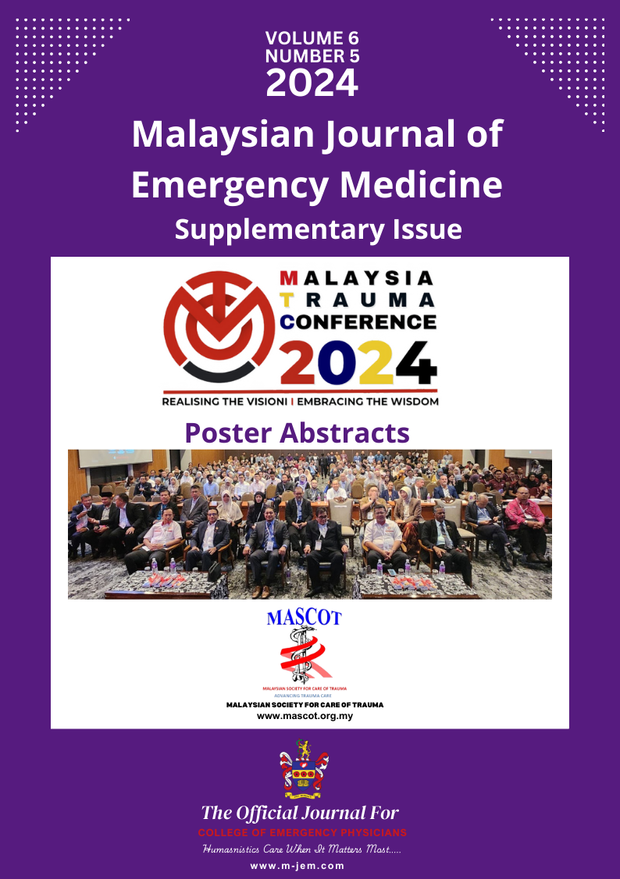A25 When A Shot Rang Out: Emergency Management Of Abdominal Gunshot Wounds
Main Article Content
Abstract
INTRODUCTION
Abdominal gunshot wounds range from minor injuries to life-threatening conditions, depending on the anatomical structures involved. Prompt and effective management is crucial to improving patient outcomes.
CASE DESCRIPTION
A 41-year-old male customs officer accidentally shot himself in the abdomen while handling a colleague’s pistol. On arrival at the emergency department, the patient was alert with a full Glasgow Coma Scale score but in haemorrhagic shock (blood pressure 84/51 mmHg, heart rate 82). Physical examination revealed two entry wounds on the anterior abdomen and two exit wound on the posterior aspect. A FAST (Focused Assessment with Sonography in Trauma) scan showed intraperitoneal free fluid. The trauma team activated, and resuscitation commenced with intravenous tranexamic acid and one pint of crystalloid fluids, followed by blood transfusions under a massive transfusion protocol (MTP). Emergency exploratory laparotomy as part of damage control surgery (DCS) evacuated 1.3 liters of blood in the peritoneal cavity and resected a 10-centimeter segment of multiple perforated small bowel. Re-laparotomy 48 hours later resulted in further 20-centimeter small bowel segment resection. The patient was discharged well after 10 days.
DISCUSSION
This case illustrates the complexities of managing high-energy ballistic trauma, which leads to severe tissue disruption and massive blood loss. Initiating damage control resuscitation (DCR) early was pivotal in stabilizing the patient. The DCR approach focused on permissive hypotension, minimizing crystalloid use, and prioritizing balanced blood product transfusion administering packed red blood cells, fresh frozen plasma, and platelets to restore circulating volume while mitigating the risk of dilutional coagulopathy. Despite the successful outcome, potential areas for improvement include optimizing prehospital care to ensure early activation of blood products and advanced resuscitation measures prior to hospital arrival.
CONCLUSION
Timely interventions, including rapid assessment, bedside ultrasound, and DCR with MTP and DCS, are essential to minimize complications and ensure positive outcomes in abdominal gunshot injuries.
Metrics
Article Details

This work is licensed under a Creative Commons Attribution-NonCommercial 4.0 International License.

